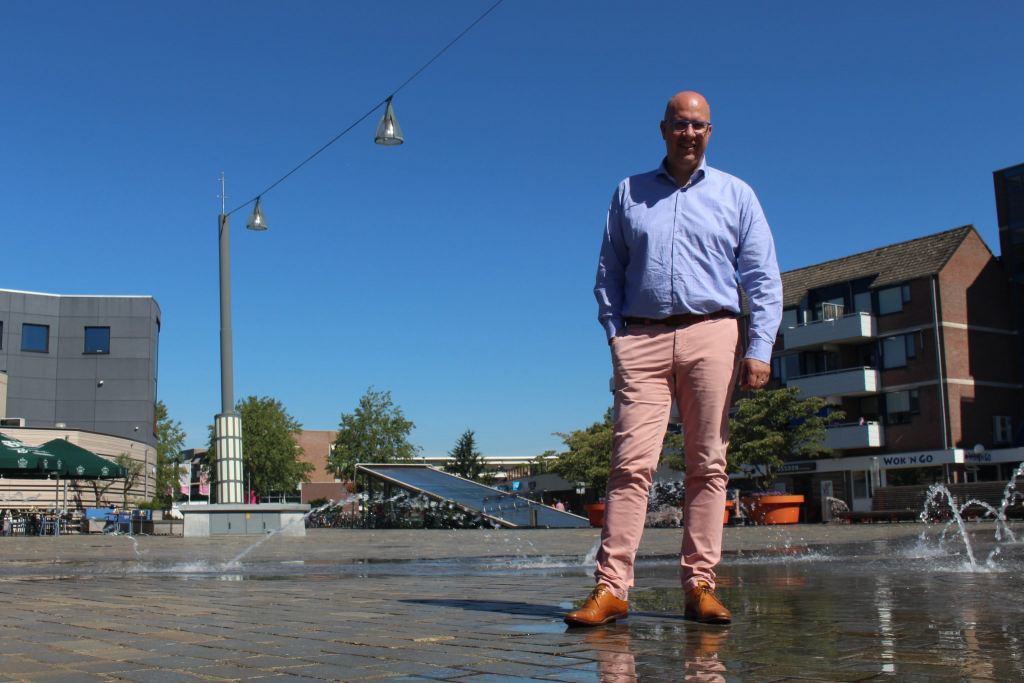
Last week, Mayor of Veldhoven, Jack Mikkers, handed over the results of a national strategy for Smart Cities to Dutch Prime Minister, Mark Rutte. The strategy has been developed in recent months by a group of companies, local governments and knowledge institutions. Brainport region top company NXP semiconductors and Mikkers have been closely involved in the process.
FOR VIDEO SCROLL DOWN
“No city wants to be a dumb city” Mikkers jokes. There are currently many initiatives taking place in the Netherlands to address societal issues in a ‘smart’ way. In this context, smart means that technology plays a key role in the solution. Dutch tech companies are leading in this field and there is a growing demand for Dutch expertise in this area both nationally and internationally.
NEW GOVERNMENT
When asked, Mikkers affirms: “I think that the Netherlands is doing very well in this area”. Last year, he was asked by the Prime Minister to produce the report on how the Netherlands could improve further in the area of smart cities. With elections looming on 15 March, 2017, it is unclear whether Rutte himself will be able to oversee implementation of the recommendations, but the plans will provide vital input for a newly formed government in whatever shape it takes.
Mikkers wants to draw attention to the start-up phase of innovative projects. He says: “There’s a good reason for the Dutch saying: ‘you travel faster alone, but you go further together’. Collaboration is beneficial, however it brings higher initial costs.” This is where government funding could help smart initiatives. Mikkers cites the Smart City Challenge in the USA as an inspiration, set up last year by the American Minister for Transport. He proposed a $40 million fund for the city with the best ‘smart’ solution for congestion problems.
The challenge led to a flood of ideas from 78 participating cities, and some were developed further. The initial $40 million eventually yielded $500 million in additional investments from partners. The American government brought in NXP to work as a partner on the project because of their expertise in the area of vehicle-to-vehicle (v2v) and vehicle-to-infrastructure (v2x) communication. Mikkers continues: “If we really want to scale up promising local initiatives from one city to another, the Government must contribute to the initial costs and provide regulatory support.”
SMART CITY LAW
Additionally, Mikkers would like the Government to provide room to experiment. He recalls the words often used by ex-Mayor of Eindhoven, Rob van Gijzel : “Legislation is always lagging behind practice”. It is often only when new practices are implemented that it becomes clear which rules need to be temporarily changed. Mikkers advocates a ‘Smart City Law’ (taking as example the ‘Crisis and Recovery Law’), which would set the boundaries of such experimentation.
For example, one area of importance is that projects are founded with a long-term vision, to avoid focusing on short term product sales. Another is that health and safety should not be compromised. The new rules should be temporary, in order to be tested and evaluated. At the end of a project, there should be an evaluation of the risks and outlook if it were rolled out on a larger scale.
This proposal is consistent with the ‘City Deals’ initiative. Six Dutch cities, including Eindhoven, have been given the room for administrative flexibility and tailor-made solutions in urban development. Government Minister Plasterk hopes this will stimulate innovation and entrepreneurship at the local level, where necessary, with relaxed rules.
THE ‘STRATUMSEIND’ EXAMPLE
The Smart Cities plan often uses the word ‘co-creation. This is strongly reflected in the development of the strategy with over 130 people involved from local government, industry and science, all committed to the next steps. Mikkers wants to use this momentum to move on to the next phase. “I think it is really important that we invest in further development of the iniatives that are already in place. Cities like to develop their own new plans, but Dutch Smart Cities should be something that we can all be proud of.
Mikkers advocates co-operation at the earliest possible stage. He is impressed with the collaboration of local government, industry and academic institutions in the Brainport region – the so-called triple helix. For instance the ‘Living Lab project Stratumseind’, where companies including Philips, Sorama and Atos together with Eindhoven and Tilburg Universities, developed a system to measure the atmosphere in this popular nightlife area, and if necessary, adjust it. Mikkers adds “Local government can’t develop something like this alone. Which councilor could have imagined that smart innovations could remotely measure if a glass has merely fallen in Eindhoven’s notorious pub district, or has been thrown?”
The NL Smart City Strategy was handed to the Prime Minister in The Hague on 25 January, 2017. You can read the document here (Dutch).

